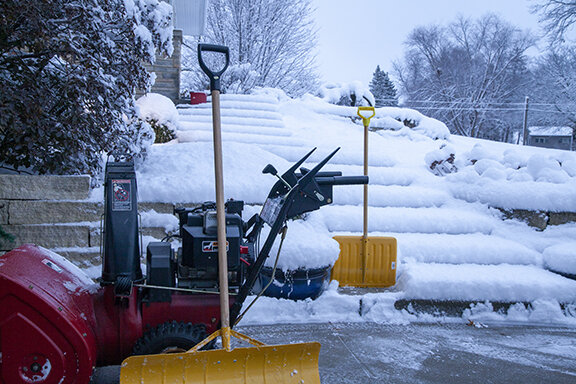The meteographs below show how temperature, dew point, relative humidity, pressure, and wind changed as a strong cold front swept across northeast Iowa today. This is a great example of the relationships between different weather elements. For those of you in education, who teach a weather class to upper elementary through high school students, the charts below illustrate how the elements changed in relation to each other with the passage of a strong cold front.
The first chart shows how temperature (solid red line), relative humidity (dashed blue line), and dew point (dotted green line) reacted as the front passed. Notice the sharp drop in temperature just before 12:00 p.m. The drop is shown by the straight down drop-off in the line. The drop continued through 8:50 p.m. which is the time the chart was captured. Colder air was behind the front. The cold front reached the weather stations at 11:15 a.m.
The dew point also trended steadily down after the passage of the front and the dew point was unsteady as the colder air followed the front. Normally the relative humidity would increase as the temperature cooled but in this case the dew point was also dropping so instead of rising the dew point was essentially steady. Colder air was attempting to increase the relative humidity while the the lowering dew point indicated drier air which would lower the relative humidity. The relatively remained relatively unchanged as the effects counterbalanced each other.
The second meteograph traces the barometric pressure. Notice the change from falling to rising at the same time as the temperature began to turn colder. The pressure rise indicates the passage of the front with it’s colder heavier air mass behind.
The last chart below is the wind speed in miles per hour. Notice the period of zero wind speed in the morning. The anemometer failed during that period so there was a zero reading. Just after noon the anemometer corrected itself. From that point on it recorded the wind speed (solid line) and wind gusts (red stars). The wind changed from southerly to westerly after the front passed (not shown here). Wind speeds recorded by this anemometer are always less than in the open country because of numerous trees around our location. We still recorded wind gusts between 20 and 30 mph. Actual speeds in the open country were greater than 40 mph. Winds were also gusty before the anemometer failed as you can see on the chart.






























































